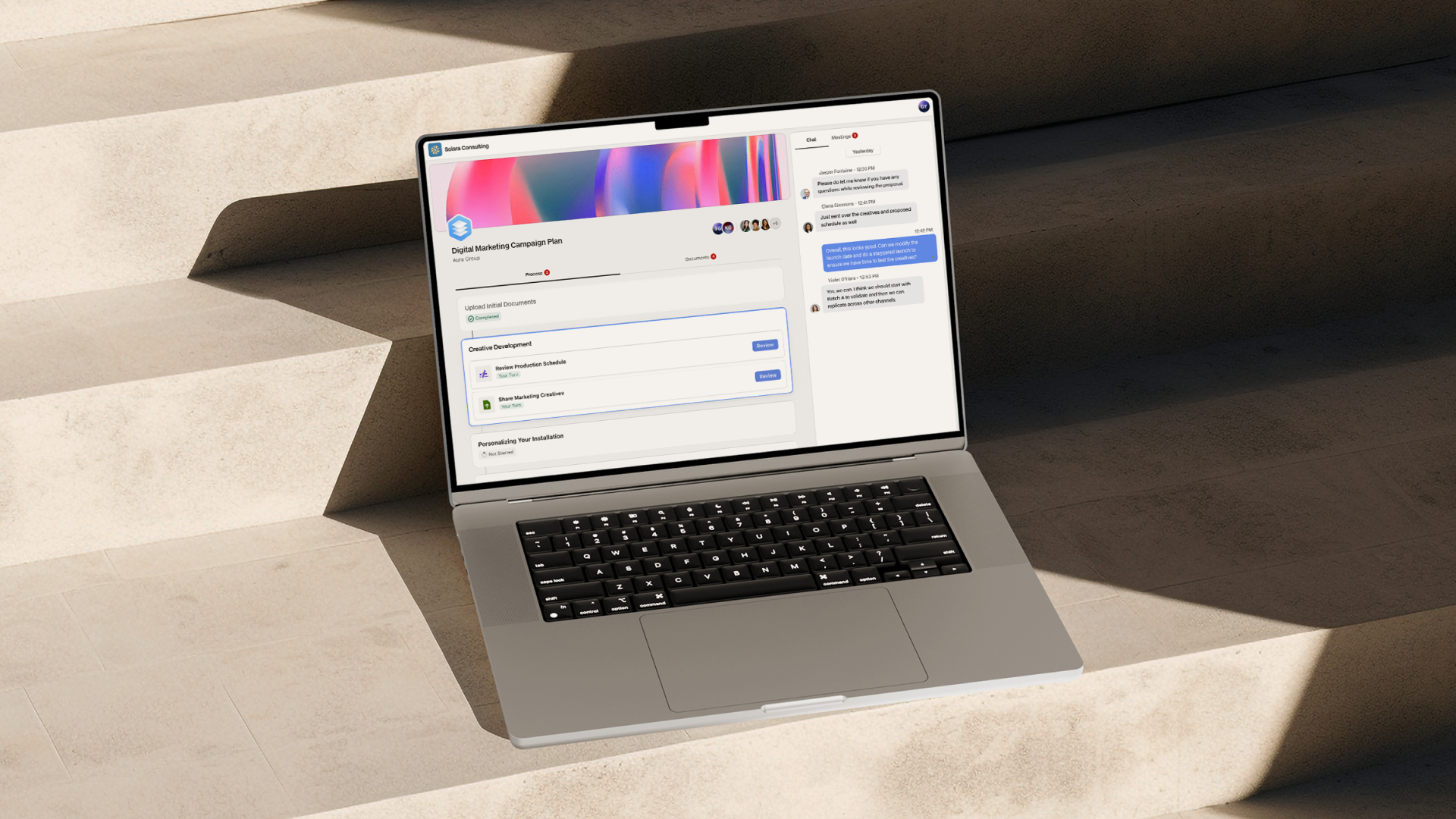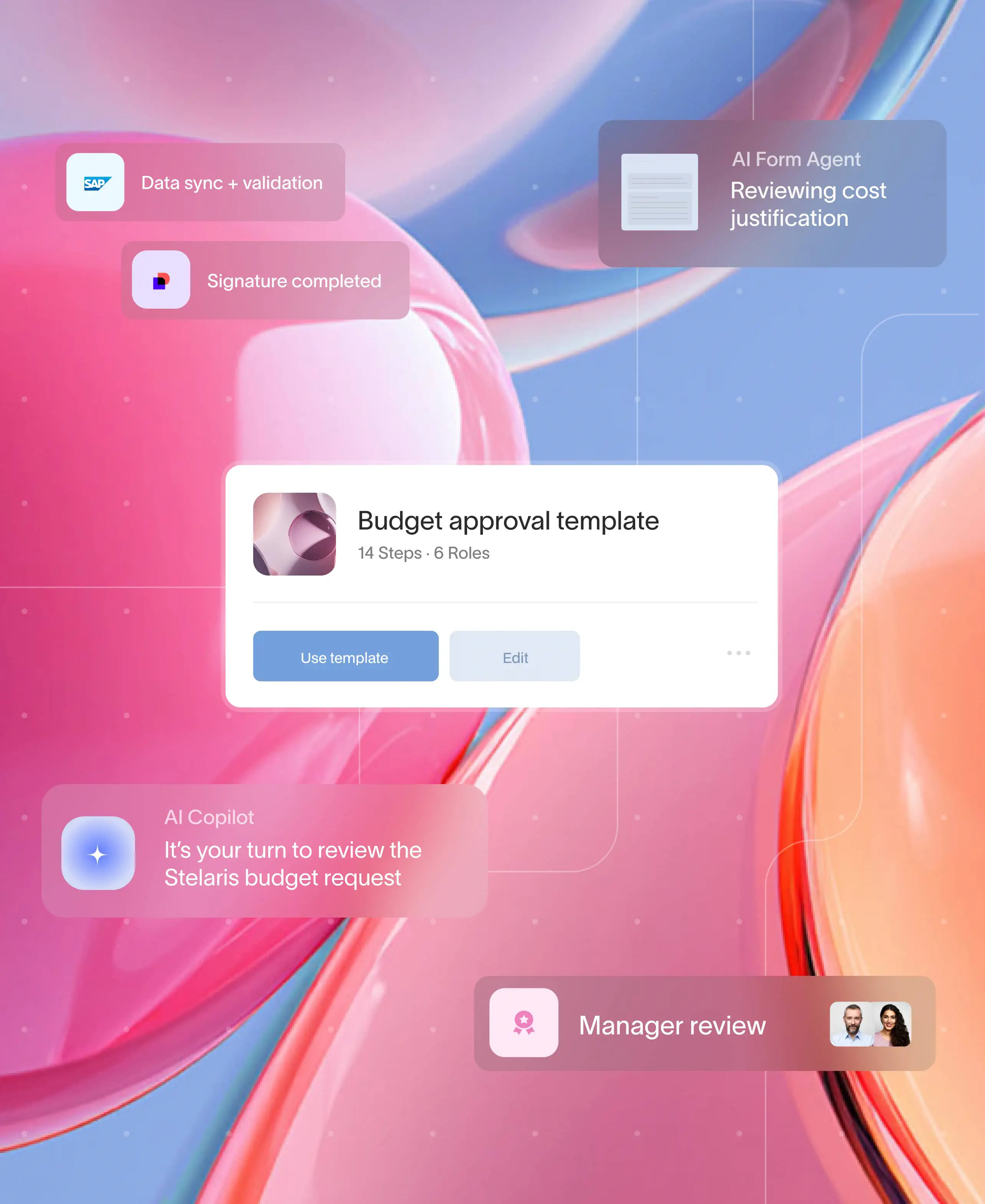
At a glance
Portal cost range: Most white-label client portals cost between $3,000 to $15,000 per year, depending on features and user base.
Three pricing tiers: Basic, business, and enterprise options often include per-user pricing, branding fees, and add-ons.
Hidden costs: Expect extras like onboarding, integrations, API usage, and branded setup to add 20 to 50% to base cost.
Contract considerations: Most platforms require 12-month commitments with varying cancellation terms.
White label client portal costs can vary significantly. A thorough evaluation of all short and long-term pricing factors is critical for making the right choice for your business.
Understanding the real cost of a white-label portal
If you’re exploring white-label client portal solutions, understanding the full pricing picture is essential. While many platforms advertise a simple subscription fee, the real cost often includes licensing, per-user pricing, onboarding, integration fees, API usage, and branding setup. These expenses can add up quickly.
In this article, we’ll walk you through the complete pricing landscape. You’ll learn how typical pricing models are structured, what hidden costs to expect, how different solutions compare in value, and how to budget more effectively across vendors and use cases, even when pricing details are not always publicly available.
What is included in a typical pricing structure
Quick answer: Most client portal platforms offer tiered pricing, typically organized as basic, business, and enterprise. These tiers reflect user volume, branding capabilities, workflow complexity, and integration needs. Here's how pricing typically breaks down:
Basic plans: Getting started ($3K-$7K annually)
Entry-level tiers designed for small teams and simple use cases typically include secure file sharing and document storage, basic task assignment capabilities, limited branding options like logo and basic colors, standard email or ticket-based support, and capacity for up to 50-100 users.
Business plans: Growing operations ($12K-$30K annually)
Designed for growing teams that need more sophisticated features, these plans usually offer automated workflows and approval processes, client dashboards with basic analytics, API access for integrations, enhanced branding flexibility, priority support, and capacity for 100-500 users.
Enterprise plans: Full white label solutions ($40K+ annually)
Comprehensive portals with complete customization include full white-label branding with custom domains and complete UI control, advanced workflow automation, robust integration support, role-based permissions and approvals, dedicated support and success management, unlimited or high-volume user tiers, and custom feature development options.
The top 5 biggest drivers behind pricing
Understanding these cost drivers helps you evaluate quotes more effectively and avoid surprises.
1. Setup and branding implementation
Portal branding: Logo placement, color schemes, and custom URLs often require a one-time fee between $1,500 and $5,000.
Visual customization: Tailored onboarding videos, branded templates, and custom style sheets may add additional costs.
Domain setup: Custom domain configuration and SSL certificates are typically included but may require technical setup fees.
2. User count and licensing structure
Per-user licensing: Many platforms charge $20 to $60 per active user per month, which becomes the primary cost driver as you scale.
Volume tiers: Pricing often decreases with scale—1,000 users might cost $35 per user monthly, while 5,000 users could reduce that to $28.
Active vs. total users: Some platforms charge only for active users, others for total registered users, which can significantly impact your budget.
3. Usage-based fees and integrations
APIs and data volume: You might pay per API call or per transaction, especially for document sharing or approval workflows.
Third-party integrations: CRMs, ERPs, payment gateways, and storage systems may be limited to higher tiers or charged as add-ons.
Storage limits: File storage beyond basic allowances often incurs additional fees that can add up quickly with document-heavy workflows.
4. AI and automation capabilities
AI-powered features: Machine learning for document processing, intelligent client routing, and predictive analytics can add 25-40% to base pricing when available.
Smart automation: Automated client communications, intelligent task prioritization, and AI-assisted workflow optimization are emerging features that command premium pricing.
Document intelligence: AI-driven document extraction, automated categorization, and smart data validation represent advanced capabilities offered by select vendors.
5. Support tiers and enhanced features
Support levels: Premium support with dedicated success managers, SLAs, and real-time assistance can add significant costs.
AI enhancements: AI assistants, smart routing, or predictive features typically add 15-30% to base pricing.
Training and onboarding: Comprehensive training programs for your team may be included in enterprise plans but charged separately for lower tiers.
How different solutions deliver value

When evaluating white label client portals, it's helpful to understand how different platforms structure their value proposition.
Moxo is designed for secure, branded service orchestration with transparent pricing. Key differentiators include a workflow builder and approvals system with visual workflow creation, role-based steps and automated triggers—ideal for loan approvals, compliance sign-offs, or document reviews. Agentic AI framework connects to workflows, transforming basic client portals into intelligent process portals that can automatically handle routine tasks, route documents based on content analysis, and provide real-time guidance to both clients and staff.
Intelligent alerts automate client nudges and reduce repetitive follow-ups. Complete white-label customization extends from logo and domain to embedded SDKs, creating a fully on-brand experience. Secure audit trails log every action for compliance with built-in oversight dashboards. Transparent pricing offers clear annual licensing with optional add-ons and no surprise costs. Seamless integrations work with leading business tools plus webhooks, APIs, and SDKs for deeper system integration.
Customer insight: BNP Paribas reduced onboarding time by 50% by unifying messaging, document exchange, and digital signatures with their Moxo-powered MyWealth app.
What to evaluate before committing to a platform
Before signing a contract for a white-label client portal, thoroughly assess both your current and future needs:
Capacity planning: Consider your current client count and expected growth over 12-24 months, plus anticipated transaction volume (approvals, file uploads, communication threads).
Integration requirements: Review compatibility with your existing CRMs, billing systems, storage providers, and other critical tools.
Customization needs: Assess requirements for domain branding, UI customization, and user experience consistency.
Workflow complexity: Simple file sharing costs less than multi-party approval routing with conditional logic.
Platform access: Ensure robust functionality across mobile and web applications.
Support expectations: Align support level agreements, response times, and escalation paths with your business needs.
Growth flexibility: Look for platforms with modular pricing that can scale without forcing budget resets.
Standard contract elements
Contract length: Most white label portal providers require 12-month minimum commitments. Some enterprise deals may extend to 24-36 months with volume discounts.
Payment terms: Annual payments upfront are common and often include 10-15% discounts versus monthly billing.
Auto-renewal clauses: Most contracts auto-renew unless you provide 30-90 days notice. Mark these dates in your calendar to avoid unwanted renewals.
Security and compliance impact on pricing
Security requirements significantly affect white label portal pricing, often adding 25-50% to base costs depending on your industry needs.
Industry-specific compliance costs
Different industries have varying compliance requirements that affect pricing. Healthcare organizations need HIPAA compliance with Business Associate Agreements (BAAs), additional encryption, audit logging, and access controls, typically adding 30-40% to standard business plans. Financial services require SOC 2 Type II compliance (standard for reputable providers) and PCI DSS for payment processing, plus enhanced data residency controls, usually costing 25-35% over standard enterprise pricing. Legal firms need advanced access controls for attorney-client privilege protection, secure communication channels with end-to-end encryption, and document retention policies with legal hold capabilities, typically requiring a 20-30% premium. The key is understanding that these aren't just add-on costs. They represent fundamental platform capabilities that ensure your portal meets industry standards.
Security features that affect pricing
Data encryption: End-to-end encryption and encryption at rest are becoming standard, but advanced key management systems may cost extra.
Advanced authentication: Single sign-on (SSO), multi-factor authentication (MFA), and identity provider integration add complexity and cost.
Audit and compliance tools: Comprehensive logging, compliance reporting, and automated security monitoring typically require higher-tier plans.
Data residency: Choosing specific geographic locations for data storage often incurs additional fees.
Backup recovery: Enhanced backup frequencies and disaster recovery capabilities typically add 10-20% to base pricing.
How to calculate the ROI of a white-label client portal
A white label client portal pays for itself when it saves time, prevents churn, and supports growth without adding staff. But ROI is only clear when you measure what's being replaced.
Start by auditing these areas:
Manual onboarding time: How many hours per client are spent chasing documents or approvals?
Email volume: How many back-and-forths could be replaced with automated workflows?
Client drop-offs: Are clients abandoning onboarding because it feels disorganized or unprofessional?
Operational headcount: Could workflows let your current team handle more clients without hiring?
ROI formula
Time savings + reduced churn + client growth – platform cost = ROI
Example calculation: If your firm onboards 20 clients monthly and cuts onboarding time by 3 hours each, that's 60 hours saved monthly. At $60 per hour in staff costs, that's $3,600/month in regained productivity—or $43,200 annually.
Factor in improved client retention, faster service delivery, and brand equity from the portal itself. A $15K/year investment becomes not just reasonable, but strategic.
Hidden fees to watch out for
Platform pricing can creep upward if you're not careful about these common additional charges:
Setup fees not included in license price: Branded UI implementation, custom domain configuration, and portal setup can be billed separately.
API and integration overages: Some platforms charge per thousand API calls or limit integrations to top-tier plans.
Premium support access: Basic plans may offer only ticket-based support. Dedicated support managers or phone support could be paid add-ons.
Workflow limitations: Complex flows, multi-step approvals, or branching logic may require plan upgrades.
Storage and user caps: You may hit limits for file storage, workspace counts, or active user thresholds sooner than expected.
Always ask: What's included in my tier, and what could drive up costs as we grow?
FAQs
Is white-labeling available for all client portal software?
No. Many entry-level platforms offer only light branding (logo, basic colors). Full white-label options—including domain masking, complete UI control, and SDK embedding—are usually limited to mid and upper-tier providers like Moxo.
Can I embed a white-label portal into my existing app or website?
Yes, if the platform offers SDKs or embeddable widgets. This capability is crucial for maintaining a seamless user experience. Be sure to confirm that embedding is included in your plan tier and understand any technical requirements.
How do I migrate from email-based processes to a client portal?
Start by mapping your most common processes: onboarding, approvals, document sharing. Then recreate those workflows in your chosen platform. You can often automate client reminders and task ownership to reduce manual work. Most platforms offer migration assistance for enterprise clients.
What's the difference between white label and co-branded portals?
White label removes all vendor branding and appears as your own solution. Co-branded includes both your branding and the vendor's (like "Powered by [Vendor]"). White label typically costs 20-40% more but provides complete brand control.
Do I need technical expertise to set up a white label portal?
Most modern platforms are designed for business users, not developers. However, complex integrations, custom workflows, or API implementations may require technical resources. Many vendors offer setup services or dedicated onboarding support.
How long does implementation typically take?
Basic setup: 1-2 weeks for simple configurations. Business implementations: 4-8 weeks including workflow design, branding, and integrations. Enterprise deployments: 2-4 months for complex requirements, custom features, and extensive integrations.
What should I do if pricing isn't publicly available?
Many enterprise-grade providers use quote-based pricing. Prepare specific requirements (user count, features needed, integration requirements) to get accurate quotes. For mid-market and enterprise organizations, this approach often provides better value since you're paying for exactly the functionality you need—advanced workflow automation, comprehensive integrations, dedicated support, and custom features that drive real business outcomes rather than one-size-fits-all packages.
What happens if I exceed my user limits?
This varies by vendor. Some automatically upgrade you to the next tier, others charge overage fees, and some may temporarily restrict new user additions. Understand your provider's policy before you hit limits.
Conclusion: Plan for growth, not just cost
The right white-label portal saves more than it costs. It becomes your digital office, client-facing infrastructure, and operational backbone—but only if you choose a platform built to scale with your business.
Look for solutions that offer transparent pricing, robust security, and the flexibility to grow with your needs. Whether you're a small firm just starting with client portals or an enterprise looking to upgrade your existing solution, the key is finding a platform that aligns with both your current budget and future ambitions.
Ready to explore your options? Most reputable providers offer free trials or demos. Take advantage of these to test workflows, evaluate user experience, and understand the true total cost of ownership before making your decision.
See how Moxo's branded portals can reduce costs and boost ROI with a demo.





